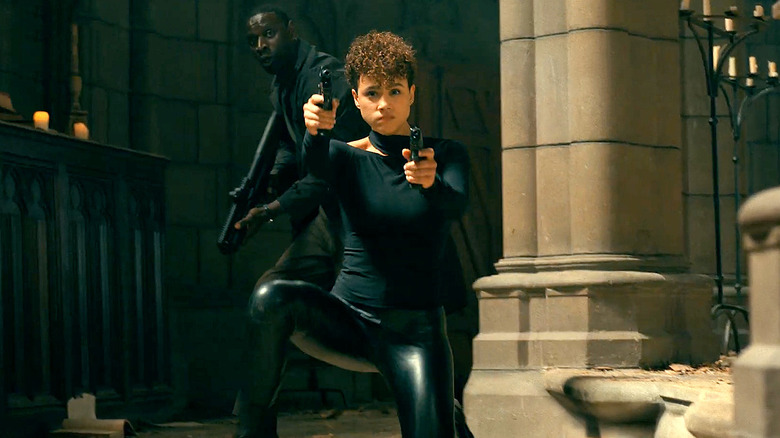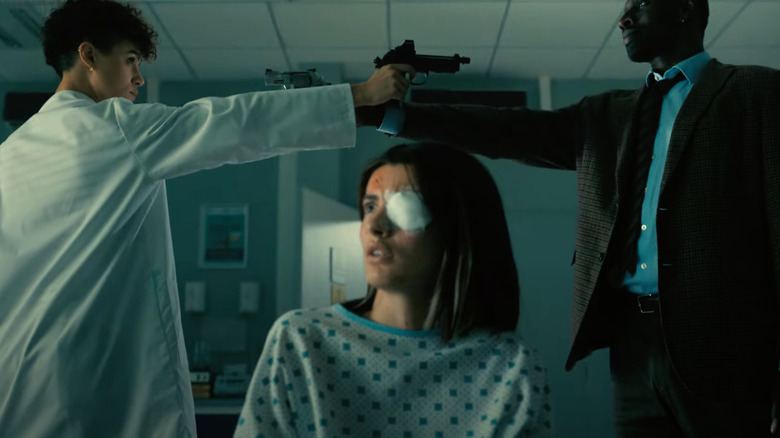John Woo Remakes His Action Classic

John Woo’s “The Killer” from 1989 is, without exaggeration, one of the greatest action films ever made. The Hong Kong filmmaker revolutionized action cinema across the globe with his bullet ballet style of gun-fu, expert use of slow motion, subversions of Western cinema tropes, and high-stakes heroism covered in blood. When he made his way to Hollywood, he melted eyes and brains with “Hard Target” and his masterpiece, “Face/Off,” but audiences have distilled Woo’s vision down to tropes instead of giving themselves over to the story. He became the guy known for big shoot-outs, doves, wuxia-style leaps, objects giving off sparks for no discernible reason, and at least one character with a tragic backstory that would make the Lifetime Movie Network blush.
Stripping those elements away, Woo has also been devoted to telling stories about complex characters — namely men — and the way a shared sense of honor/duty/revenge can complicate their relationships with those around them. He loves a good redemption arc, examining how the weight of past sins drags a person down, and his violence is used not unlike a song in a musical — it’s an extension of overwhelming emotions. He has always been so much more than gigantic set pieces and Chow Yun-fat starring as the baddest motherf***er on the planet.
Hollywood has been trying to remake his Chinese masterpiece for over three decades, with the original caveat that the killer would need to be a woman as American audiences would interpret the relationship between the two male leads as homoerotic (Michelle Yeoh was approached at one point), or that the focus needed to shift from the hitman and the police officer on his heels to the hitman and the nightclub singer blinded during a shoot-out. But action movies have changed in the last 30 years, as has America’s relationship with guns. Comparison is a thief of joy because while “The Killer” (1989) is an incomparable chef-d’oeuvre, Woo’s reimagining for 2024 is an evolution of not just his style, but his relationship with weapons as a whole and a showcase of his appreciation for French action cinema.
Nathalie Emmanuel gives new meaning to ‘Woo Girl’
As the titular killer, Nathalie Emmanuel has the impossible task of filling the shoes of Chow Yun-fat. Wisely, she and Woo do not attempt to channel Ah Jong, instead allowing her character Zee to thrive as something wholly unique. Woo is arguably the living filmmaker most determined to examine masculinity, and without a male relationship to dissect, it gives him the space to honor the femme fatale in her purest form. Emmanuel and Omar Sy as police officer Sey never reach the high-octane heights of Yun-fat and Danny Lee, but they’re not trying to. Their alliance is an entirely different beast, but whenever the two stare each other down with guns drawn at eye level, it’s a testament to Woo’s unwavering commitment to blocking actors’ physicality to tell a story beyond the script.
The warmth of Woo is well on display, but there isn’t a hint of romantic tension between the two. They are a pair of professionals who develop a great deal of respect for one another and their commitment to duty, which only adds to the intrigue of the story. Woo could have easily fallen into the traps of an enemies-to-lovers dynamic, but in avoiding it, he has avoided a boring, predictable trope. Their chemistry is still palpable, and while the action often feels a little safe (because productions today are legitimately safer than the unhinged madness of Woo’s sets in the 1980s), Emmanuel and Sy are both formidable fighters.
There are certainly bullets aplenty and a few well-placed mid-shootout moments that’ll have you screaming “HAHA HELL YEAH!” at the screen, but there is a greater emphasis on hand-to-hand combat and even swordplay. This is Woo doing Cinema du Corps. Detective Sey is a hulking grappler, performing power moves that make him look gigantic compared to the sleek and stylized full-body attacks of Zee. At one point she runs across a series of church pews like Jesus walking on water, only to jump across a sanctuary, guns blazed, to unload a hurricanrana on a baddie while still unloading her clip.
Yes, it is as f***ing awesome as it sounds.
The Killer continues Woo’s reappraisal of his own work
As a film, “The Killer” is a pretty cool made-for-streaming action film with solid performances, fun set pieces, plenty of melodrama to go around, and Woo’s signature wordplay that may inspire eye-rolls from some but a sensible chuckle from those of us with good taste. It’s a shame that when the film’s limited budget is noticeable, it borders on becoming a distraction (one of the tracks that score a high-speed chase is laughably cheap sounding) because these shortcomings will undoubtedly be weaponized as reasons to discount this effort or justify the take of an “unnecessary remake.”
But at nearly 80 years old, Woo is continuing the reappraisal of his own work, and restructuring how his vision of action cinema fits in a world that has grown beyond the unchecked gun worship of yesteryear. 2023’s “Silent Night” was woefully misunderstood by critics and audiences alike, failing to recognize its brilliance as a dissection of men who refuse to feel emotions and their overreliance on high-powered weaponry, as well as how much it had in common with his early Chinese films. He is also incredibly sincere as a writer, something American audiences tend to be allergic to these days for fear of being “cringe,” but that he has included in his most recent ventures as a feature, not a bug.
“The Killer” is not trying to recapture his masterpiece, but a continued exploration of similar dynamics in a new setting with new people and in a new time period. No one else should have or could have remade this film other than John Woo, and while most certainly imperfect, I suspect this is precisely the story he wanted to tell, told exactly as he envisioned it. Who am I to question a master?
/Film Rating: 7 out of 10
“The Killer” is now available to stream on Peacock.
Source link






